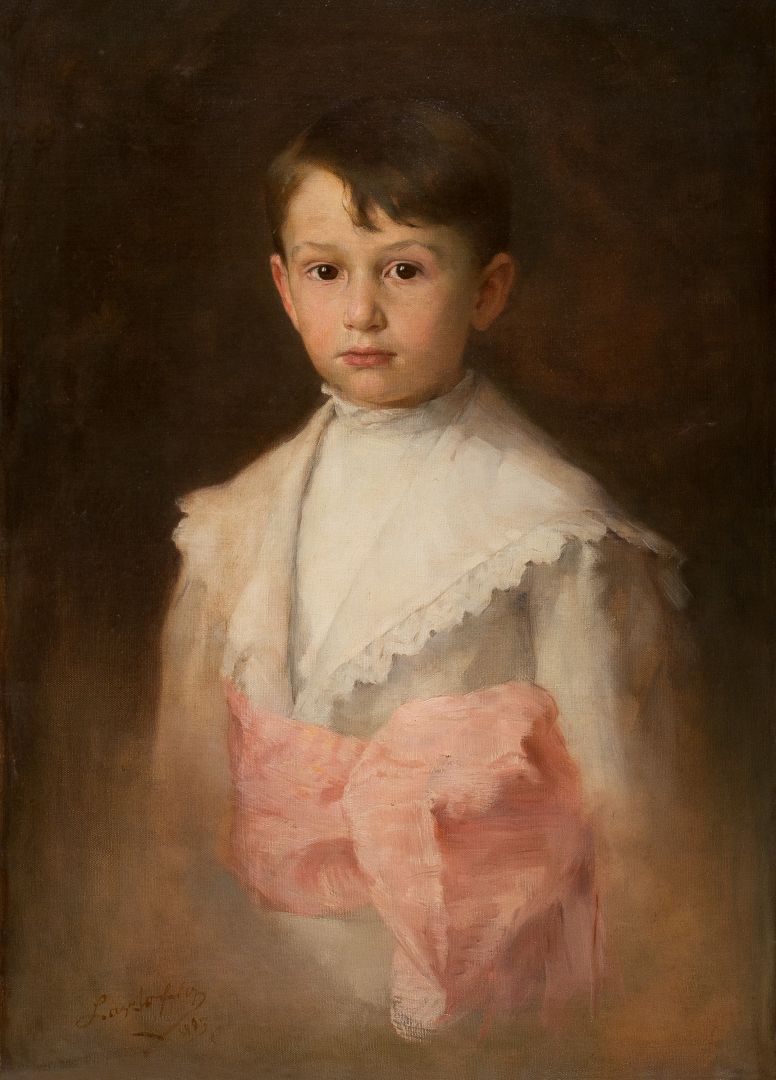Hall 2
Portrait of a Child
LÁSZLÓ, FÜLÖP (1869–1937)
Portrait of a Child, 1893
oil on canvas, 70x50 cm; marking at the bottom left: László Fülöp 1893
Fine Arts Collection, Inv. No.: 53.38.1.
The Fine Arts Collection of the Herman Ottó Museum boasts several fine examples of the centuries-long artistic relations between England and Hungary. Such pieces include the works of Jakab Bogdány and Károly Brocky as well as this painting from Fülöp László.
Fülöp László became a famous portrait painter during the decades between the turn of the century and World War II. His career began in Hungary but he reached his full potential internationally, especially in England, his second home, where he settled in 1907. His move was likely motivated not only due to his previous commissions, but also by the fact that he married an Irish woman. With his virtuoso portraits, he immortalized the members of various European ruling families, aristocracy, nobility, the church and the political elite, as well as several other renowned individuals.
Several paintings of children can be found the oeuvre of the painter, which consists of thousands of artworks. Children are recurring characters in his rural themed plein air genre paintings until the mid-1890s. However, the artwork in our collection is more characteristic of his later works as a mature and up-and-coming portrait artist. Although the painting itself is mentioned by him in a letter from 1935, the identity of the model is still unknown to this day. The child is depicted from the waist up, with the body slightly turned sideways and looking at the viewer. The painting does an excellent job conveying the material of the snow-white silk dress with widely turned out lace collar as well as the loosely tied rose coloured waist belt. These elements give off a ceremonial impression and emphasize the tenderness, openness and purity associated with children, qualities which can also be found in a concentrated, spiritual manner on the elaborately painted face of the model within the unerring gaze of the brown eyes. The figure of the boy fades towards the bottom of the image and his outline is also depicted softly against the dark, reddish-brown background. These put further emphasis on the lustre of the bright-eyed gaze, which invites the viewer to ponder on the unknown fate of the child in front of them. The artwork could be described as photorealistic, and although the depiction of the model is very lifelike, the overall presentation is more ethereal and illuminating.
The painting was donated to the museum in 1937 by the widow of Lajos Szeremley, who passed away later that same year.
Ákos Barkóczi
